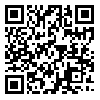Tue, May 6, 2025
[Archive]
Volume 10, Issue 3 (September 2014)
IJEEE 2014, 10(3): 188-202 |
Back to browse issues page
Download citation:
BibTeX | RIS | EndNote | Medlars | ProCite | Reference Manager | RefWorks
Send citation to:



BibTeX | RIS | EndNote | Medlars | ProCite | Reference Manager | RefWorks
Send citation to:
Marvasti Zadeh S M, Ghanei Yakhdan H, Kasaei S. An Efficient Adaptive Boundary Matching Algorithm for Video Error Concealment. IJEEE 2014; 10 (3) :188-202
URL: http://ijeee.iust.ac.ir/article-1-613-en.html
URL: http://ijeee.iust.ac.ir/article-1-613-en.html
Abstract: (5464 Views)
Sending compressed video data in error-prone environments (like the Internet and wireless networks) might cause data degradation. Error concealment techniques try to conceal the received data in the decoder side. In this paper, an adaptive boundary matching algorithm is presented for recovering the damaged motion vectors (MVs). This algorithm uses an outer boundary matching or directional temporal boundary matching method to compare every boundary of candidate macroblocks (MBs), adaptively. It gives a specific weight according to the accuracy of each boundary of the damaged MB. Moreover, if each of the adjacent MBs is already concealed, different weights are given to the boundaries. Finally, the MV with minimum adaptive boundary distortion is selected as the MV of the damaged MB. Experimental results show that the proposed algorithm can improve both objective and subjective quality of reconstructed frames without any considerable computational complexity The average PSNR in some frames of test sequences increases about 4.59, 4.44, 3.57, and 2.98 dB compared to classic boundary matching, directional boundary matching, directional temporal boundary matching, and outer boundary matching algorithm, respectively.
Keywords: Error Concealment , Motion Vector Estimation , Macroblock , Boundary Matching , Outer Boundary Matching , Directional Boundary Matching , Directional Temporal Boundary Matching
Type of Study: Research Paper |
Subject:
Image Processing
Received: 2013/08/05 | Revised: 2014/10/15 | Accepted: 2014/09/24
Received: 2013/08/05 | Revised: 2014/10/15 | Accepted: 2014/09/24
| Rights and permissions | |
 |
This work is licensed under a Creative Commons Attribution-NonCommercial 4.0 International License. |







